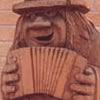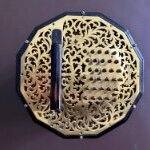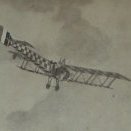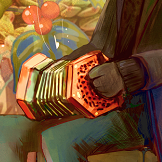-
Posts
2,102 -
Joined
-
Last visited
About Theo
- Birthday 01/29/1950
Contact Methods
-
Website URL
http://www.theboxplace.co.uk
-
ICQ
0
Profile Information
-
Gender
Male
-
Interests
I tune/repair/restore and buy and sell concertinas and melodeons.
-
Location
Gateshead, England. Land of the Angel of the North!
Recent Profile Visitors
3,598 profile views
Theo's Achievements

Heavyweight Boxer (5/6)
-
I plead Occam's Razor
-
Agreed, but I see the most practical advice as given above and based on experience, is to patch the corners, or do a full rebind. Both are tried and tested, not difficult and if done with decent materials will be long lasting.
-
Not a good sign of sound advice. 😉
-
Or possibly tuned an octave below the standard notes?
-
I'd hazard a guess that the ebay description was written by the AI that ebay now offers sellers. I tried their AI recently when I sold something there and it produced a load of plausible sounding waffle. I think this description is in the same category. Try asking the seller if all the notes play and when it was last tuned. The answers will be revealing. For this price you would expect a German concertina to have been serviced and tuned in preparation for the sale.
-
Wheatstone’s Instructions for the English Concertina by Alfred Edwards.. Published 1960. Soft cover 52 pages. £20 including UK postage
-
This does look exactly like a Lachenal. But there have been German made copies of English made concertinas, even including action that is very much the same as typical Lachenal action. This one for example
-

Advice for thickness of leather for bellows
Theo replied to Rod Pearce's topic in Instrument Construction & Repair
Going back to paring knives, I've had a similar frustrating experience with a Scharf Fix and now use one of these simple knives. It took me a long time to learn how to sharpen it properly but once sharp it's very quick and effective and just needs the edge to be refreshed on a leather strop after every couple of metres of cut. My sharpening mentor describes the degree of sharpness to be such that if you drop the knife your would be worried about your feet! https://www.hewitonline.com/Standard_English_Paring_Knife_p/tl-070-pk.htm -
Yes I can send to USA.
-

a short rant about trying to sell stuff...
Theo replied to seanc's topic in General Concertina Discussion
Well of course they are TV shows and as such have various degrees of scripting/editing/production. Nonetheless they can give you an insight into a the process of polite hard bargaining. Real life may not be so pleasant, I'm sure we've all had interactions with our fellow humans where things didn't go as smoothly as we would have liked. Example: I once experienced an unprovoked verbal assault from a complete stranger, eventually they huffed off. When I described the incident to a wise friend he consoled me with the thought that although I would probably never see the person again, they would have to continue living with their own anger. So if people get worked up and appear angry because you prefer not to accept their offer, don't take it personally, just let them go. -

a short rant about trying to sell stuff...
Theo replied to seanc's topic in General Concertina Discussion
Selling things is not as easy as it might appear! That's why so may people have paying jobs selling things. It's bit of a game really, Sometimes the hardest part is treating people politely when they are rude. There is an art to negotiating prices without demeaning the other party, or the object being sold. In the UK there is a TV series called Salvage Hunters where the dealer at the centre of things is an absolute master of the being hard-nosed but keeping things polite and friendly. I've pinched a few of his nice phrases that smooth the process. -
Two stages to this: 1 learning the tune so you can sing it, which just requires time spent listening, and that can be live music or recordings. 2 learning to put the tune in your head into your fingers on the instrument. They are very different skills and I think you can make better progress if you recognise that and adopt a learning strategy to suit.
-
It's quite normal for some reeds to be shorter than their slots. These reeds all look perfectly usable, though of course I can't tell from a photo if the reddens have been filed excessively. The amount of filing doesn't look excessive. How do the reeds respond? That is the important question. I think you may be being overly pessimistic.
-
Don't be too hasty to discard reeds. The originals in that instrument will be some of Lachenals best quality. Replacing them with easily available reeds may not be an improvement. Looking at the picture the filing seems to have been done carefully, so only reject reeds after they have proven themselves to play poorly.










